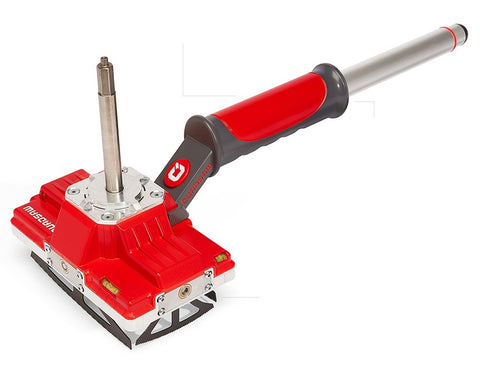How to Drill a Square Hole?
Feb 01 2017 0 Comments
The answer is very simple, using the QUADSAW. This attachment can be used to cut square or rectangular holes in Gib Board endless times with no hassle.

The attachment is the brainchild of T. Michael Sebhatu, an African refugee turned engineer, who saw a tradesman installing electrical boxes and decided there had to be a faster, more accurate way than marking and cutting by hand.
Click on the picture to watch the video
Sebhatu devised a mechanism that converts the rotary motion of a drill to the linear motion of an oscillating multitool (OMT). The blade in an OMT moves only a fraction of an inch per stroke, yet is able to cut because the tool produces thousands of strokes per minute - a technology devised in the 1940s by an orthopedist who wanted a faster safer way to remove plaster casts.
Here are some interesting market figures from UK:
It's the quickest way to cut a square hole: under 30 seconds. Market research has shown that it takes around five minutes for an electrician to mark up and cut a square hole socket for a plug. With 250,000 electricians in the UK cutting around three holes each working day, there are almost 200 million square holes cut each year (based on 256 working days).
If all of them were using the QUADSAW, this would save approx. 16 million hours in work. Building companies would save approx. £320 million a year (based on average worker pay of £20/hr.) in the UK alone and more globally.
Click on the picture to watch the video
The QUADSAW was patented and developed by Genius IP and is set for release in the UK in the summer of 2017. The company is said to have models sized for the electrical boxes used in the US and the tool is expected to sell for £199 (about $220 USD). That's a lot to spend for a hole cutting attachment, but it could be worth it to the electrician who regularly installs old work (retrofit) boxes in drywall.
Please note though, we don't actually stock this tool - but it will certainly be something I look at in the future!
Cheers, Gaston
0 comments



Leave a Comment